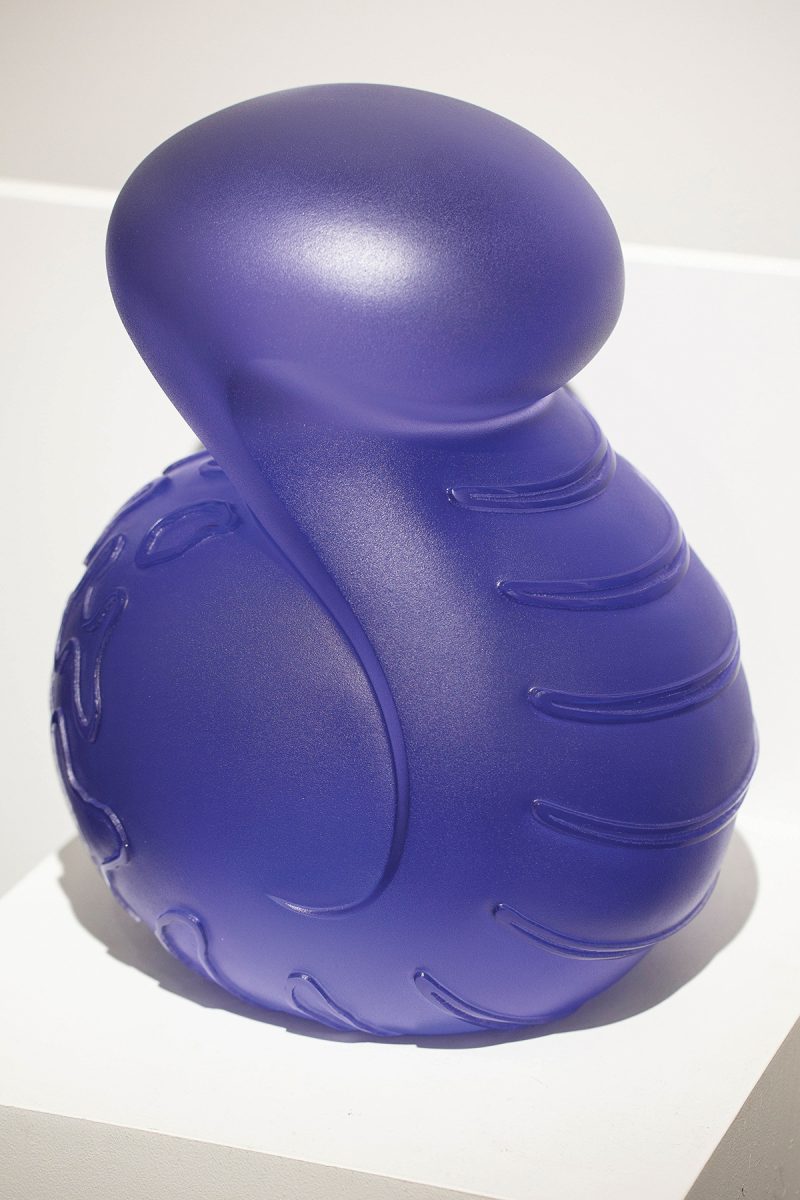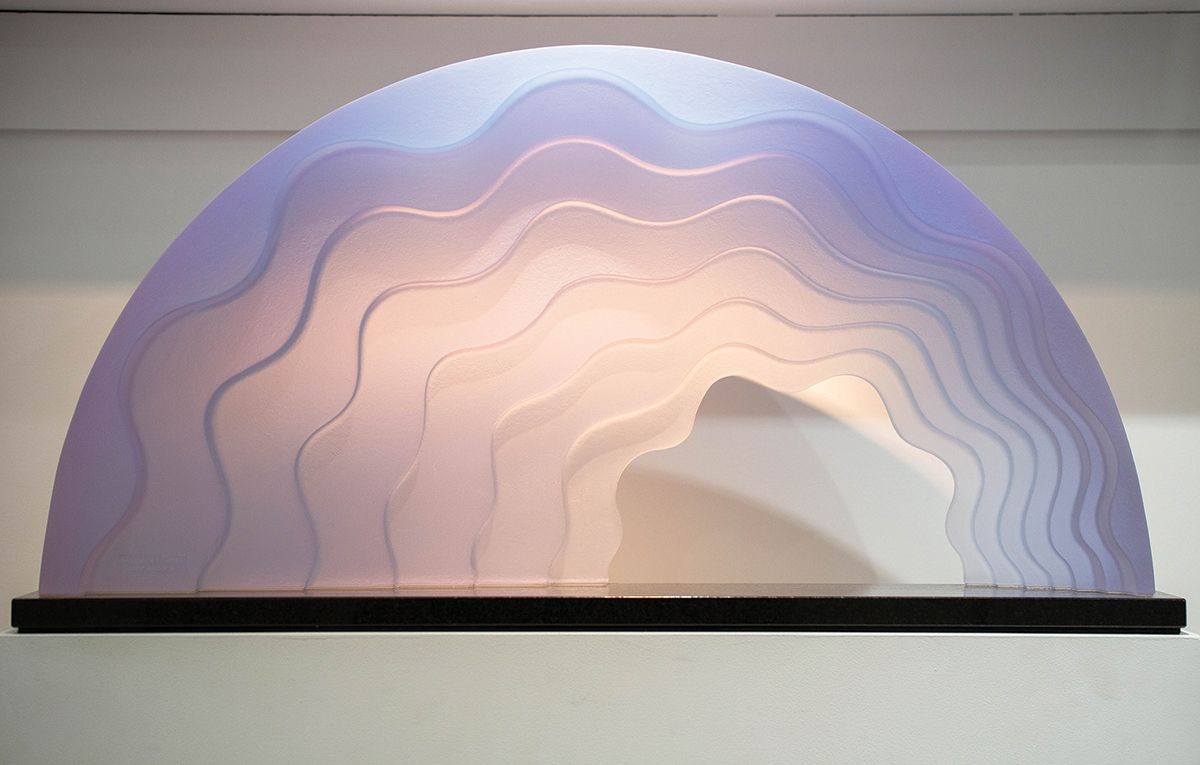Reflections from a founder of the Studio Glass Movement

Photo by Colby Rabon
Mark Peiser is able to reflect on five decades of success in the American Studio Glass Movement. His half century of accomplishments includes making distinctive bodies of work spanning 1967 to the present, creating cutting-edge techniques, co-founding the Glass Art Society, headlining exhibitions worldwide, landing in countless public and private collections, publishing his book Thirty-Eight Pieces of Glass — that combined images of his work with his poems and prose — and winning awards from multiple glass and arts organizations.
And yet Peiser insists, “My whole career was a matter of the right time and right place.”

Before he “kind of stumbled into studio glass” at the beginning of the movement, Peiser studied electrical engineering at Purdue University, then received a BS in Design from Illinois Institute of Technology. He worked in those fields in Chicago for some years, then made an abrupt turn to study piano and composition at DePaul University School of Music. “But ultimately,” he says, “I reached the point where I realized I did not have the gifts it would take to do what I wanted to do in music.”
Depressed, aimless, and seeking to drop out of the corporate world, he was thumbing through Craft Horizons magazine, published by the American Crafts Council (his wife was a ceramicist), and stopped on a page describing four places a curious mind might study glass over the summer. Two were already full, and one was more of a college environment that didn’t interest him.

The fourth was a place named Penland School of Crafts (now “Craft”) in North Carolina. He called and asked the registrar what the class would focus on, and her honest answer intrigued him.
“She said, ‘We don’t know. When the teacher arrives and sees the class, he’ll figure out what they do.’ I found that curious — and decided to go to Penland.”
Peiser notes that the entire crafts movement was being re-energized then, and recalls Penland as a magical place. It was also quite modest. There were about a dozen students in that summer of ’67 class, learning “a trifle” about blowing glass on very rudimentary equipment in a very primitive studio. “Bill Brown, the director of Penland, had a fellow from Carbondale come down and build a glass facility,” Peiser relates. “It was basically a pile of bricks on a sand dune with a couple of 4 by 4s holding up a tin roof.”

Nevertheless, he was hooked, and that fall he became the first Resident Craftsman in Glass at the school. “I was the glass program,” he says with a laugh. He adds that Brown’s goal in starting the residency program at Penland was to see if anyone working in craft would be able to make a living out of it.
Through his three-year residency, Peiser was able to meet other glass artists who came to teach and visit. He began selling his work and gaining recognition in a field that was dynamic, growing, and increasingly respected. Universities and schools were adding glass programs, and he could have accepted a teaching position at any of them, but he chose to stay at Penland.

In 1971, he built a studio on the grounds and spent the next 20 years there before building a home and studio on 14 acres of Appalachian woods on top of a ridge less than ten miles away.
His bodies of work from those studios include his first iridescent miniatures and the vessels he has always been drawn to; the Paperweight Vase series; Inner Space pieces; larger, more sculptural cast works called Forms of Consciousness; cold stream casting; the Palomar series; and Passages and Etudes, work on the subject of light.

“Any of the different series I’ve done seem to have the same sort of life,” he says. “It starts off with big ideas and I work it through to where I hit the absolute limitations of what is possible — and that starts me thinking something else.”
His background in engineering was an ideal foundation for the medium. “In retrospect, I was pretty well suited for the situation at the time. My work experience had been problem solving, and that has basically been my experience in glass. I had always made things for people, and one night I had the notion of making things for myself, and that led to glass.”
Peiser’s work is represented locally by Bender Gallery and is included in the permanent collections of Asheville Art Museum, Smithsonian American Art Museum, Corning Museum of Glass, and abroad at Museum of Art Lucerne, Tokyo’s National Museum of Modern Art, and the Peggy Guggenheim Collection in Venice, among other venues.

But he says it’s only since his beloved two cats passed away a few years ago that he displays his work in his own home.
“I started moving in some pieces that, over the years, for one reason or another, were special to me. I got some pedestals and put them out, and sometimes I look at them.”
Mark Peiser (markpeiser.com) is represented by Bender Gallery Contemporary Fine Art & Sculpture, 29 Biltmore Ave., Asheville. For more information, call 828-505-8341 or see bendergallery.com.
